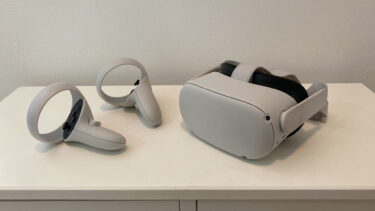
Image: MIXED
Der artikel kann nur mit aktiviertem JavaScript dargestellt werden. Bitte aktiviere JavaScript in deinem Browser and lade die Seite neu.
When it comes to the success of Meta Quest 2, people often speculate on sales figures. However, they are not the deciding factor for success. This could be the reason why Meta doesn’t talk about it and is also silent on a much more interesting number.
Meta has probably sold around ten million devices by now. This is relatively certain. Anyone familiar with Meta’s virtual reality story knows this this is an important number.
In 2018, Mark Zuckerberg defined ten million users on a single VR platform as a preliminary goal. Once that milestone is reached, studios could afford to develop high-quality VR content, which in turn would drive more users into the ecosystem to purchase it. The result, Zuckerberg said on the Oculus Connect 5 stage, would be explosive growth.
Last summer, Meta’s chief technology officer Andrew Bosworth drew an initial positive conclusion that this figure could be reached faster than Meta expected. However, Bosworth did not disclose the exact time frame.
If Meta has really sold ten million units, why isn’t the company talking about it?
VR Success: It’s all about the use
Metaverse blogger Wagner James Au recently asked himself this question. One of his readers gave him a possible answer: the number of active users could be significantly lower than the hardware sales figures.
Poor retention metric would negatively impact the external view of Meta’s high Metaverse spend, as it goes against Meta’s investment thesis that VR is particularly fascinating in the long run thanks to its immersion. It would seem that people have tested virtual reality out of curiosity, but have not found it interesting beyond an initial enthusiasm.
So there may be some truth in this thesis. If we listen to Zuckerberg’s 2019 keynote again, it becomes clear that the CEO was not referring to sales figures, but to the people who use and purchase VR content. You can look at the relevant passage below.
Two years later, Zuckerberg said in an interview with The Verge, that “from an ecosystem perspective, we believed that if we get to 10 million active units, then this is a critical magic number.” Zuckerberg added that he is optimistic about achieving that goal “in the next few years”.
Meta, therefore, measures virtual reality success less in terms of hardware sales data than in terms of return users and uptime – these are common metrics in the media industry. High return rates and long usage times are the basis for revenue growth.
Samsung’s Gear VR smartphone VR glasses are a vivid example of hardware that spreads much better and faster than the competition, but had no budget basis due to low usage.
More software, more comfortable hardware
So even though Meta has sold ten million devices – the company is probably a long way off ten million active VR users, which is why it always cites other metrics like app store milestones and developer revenue when it wants to talk. successfull.
Could it be that many Quest devices are barely used? At least less frequently than other gaming platforms such as smartphones, consoles and PCs?
The fact that many Quest headsets remain unused in the closet is something former Oculus Chief Technology Officer John Carmack said late last year. Hardware analyst and leaker Brad Lynch says he often hears from his sources that customer retention is still a weak spot in the VR industry. So storage still seems to be a challenge for virtual reality, even with the most affordable standalone headsets.
One possible reason: VR is challenging. Players need to set up their play area, possibly clear the room and perhaps be physically active instead of sitting down to play. The 360-degree immersion and natural VR interaction with your own body are impressive and the great advantage of the medium. At the same time, virtual reality is also more cognitively taxing than traditional media.
Great content could keep players coming back regularly, Carmack said. But it’s also possible, he said, that first the hardware will have to get better, lighter and offer more features to add value than other forms of entertainment, or that VR headsets will have to boot up and be ready to go faster.
Note: Links to online shops in articles can be so-called affiliate links. If you buy via this link, MIXED receives a commission from the provider. For you the price does not change.